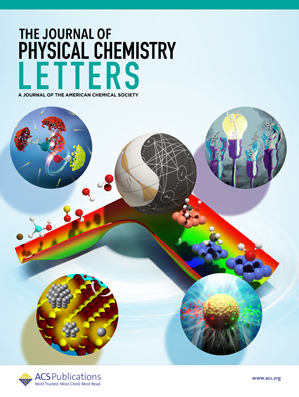Advancing Molecular Simulations: Merging Physical Models, Experiments, and AI to Tackle Multiscale Complexity
IF 4.8
2区 化学
Q2 CHEMISTRY, PHYSICAL
引用次数: 0
Abstract
Proteins and protein complexes form adaptable networks that regulate essential biochemical pathways and define cell phenotypes through dynamic mechanisms and interactions. Advances in structural biology and molecular simulations have revealed how protein systems respond to changes in their environments, such as ligand binding, stress conditions, or perturbations like mutations and post-translational modifications, influencing signal transduction and cellular phenotypes. Here, we discuss how computational approaches, ranging from molecular dynamics (MD) simulations to AI-driven methods, are instrumental in studying protein dynamics from isolated molecules to large assemblies. These techniques elucidate conformational landscapes, ligand-binding mechanisms, and protein–protein interactions and are starting to support the construction of multiscale realistic representations of highly complex systems, ranging up to whole cell models. With cryo-electron microscopy, cryo-electron tomography, and AlphaFold accelerating the structural characterization of protein networks, we suggest that integrating AI and Machine Learning with multiscale MD methods will enhance fundamental understating for systems of ever-increasing complexity, usher in exciting possibilities for predictive modeling of the behavior of cell compartments or even whole cells. These advances are indeed transforming biophysics and chemical biology, offering new opportunities to study biomolecular mechanisms at atomic resolution.

求助全文
约1分钟内获得全文
求助全文
来源期刊

The Journal of Physical Chemistry Letters
CHEMISTRY, PHYSICAL-NANOSCIENCE & NANOTECHNOLOGY
CiteScore
9.60
自引率
7.00%
发文量
1519
审稿时长
1.6 months
期刊介绍:
The Journal of Physical Chemistry (JPC) Letters is devoted to reporting new and original experimental and theoretical basic research of interest to physical chemists, biophysical chemists, chemical physicists, physicists, material scientists, and engineers. An important criterion for acceptance is that the paper reports a significant scientific advance and/or physical insight such that rapid publication is essential. Two issues of JPC Letters are published each month.
 求助内容:
求助内容: 应助结果提醒方式:
应助结果提醒方式:


